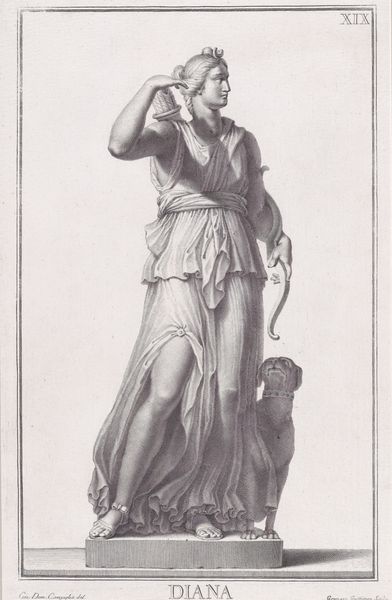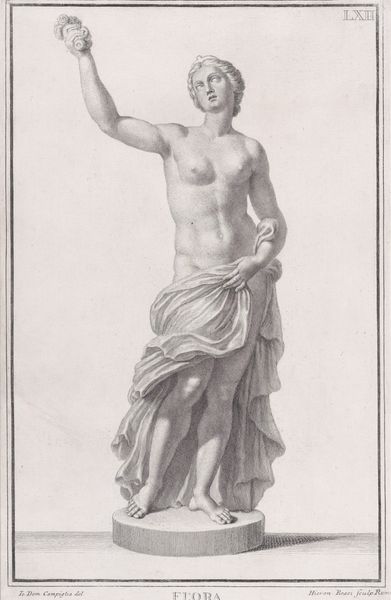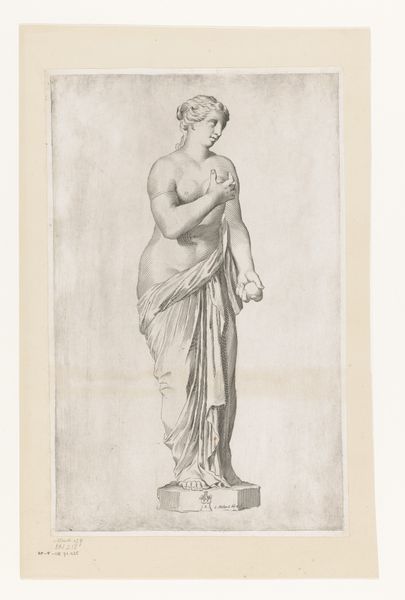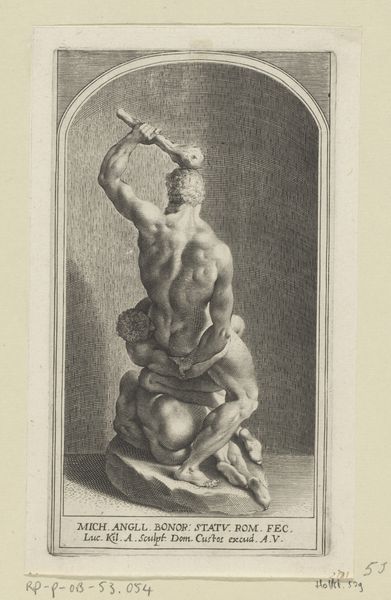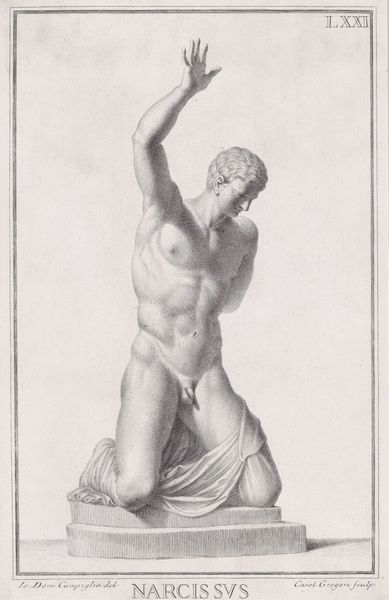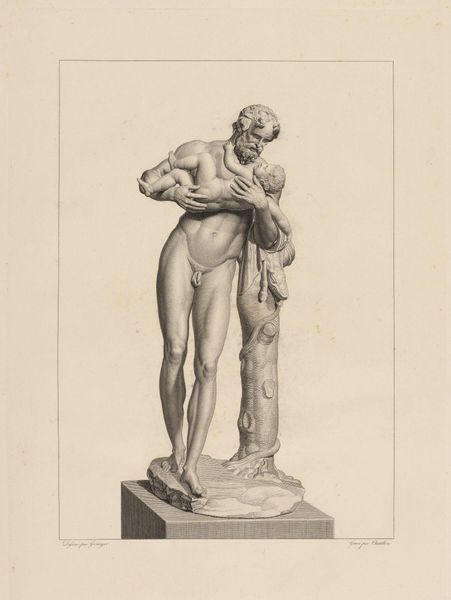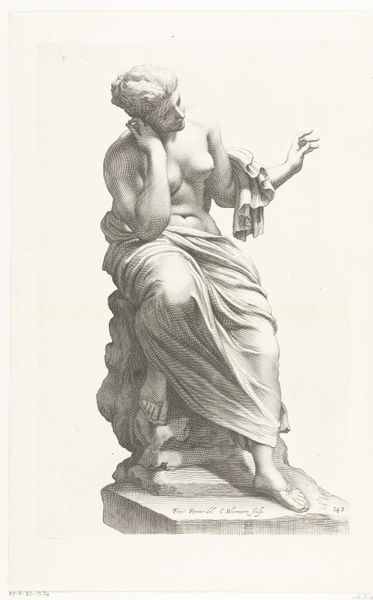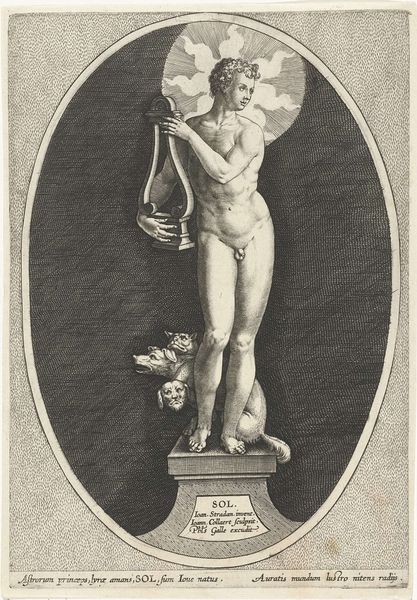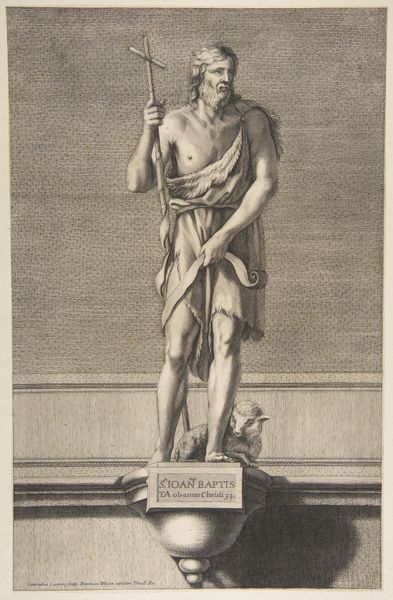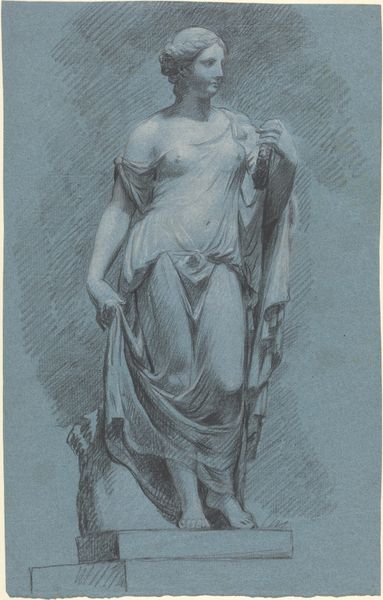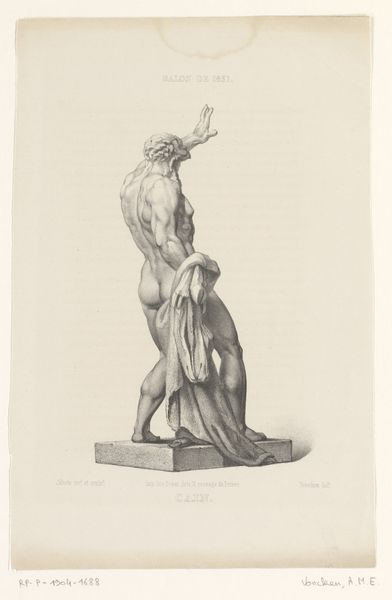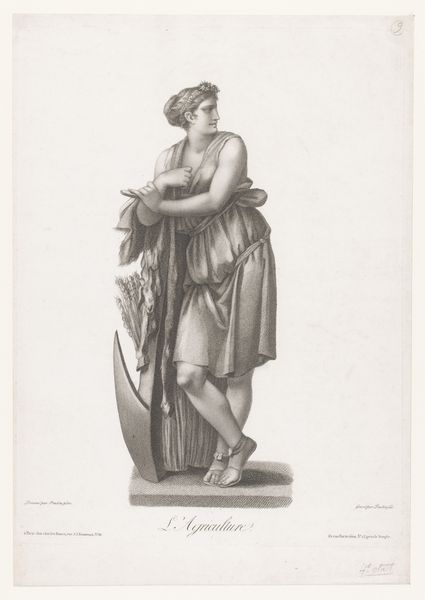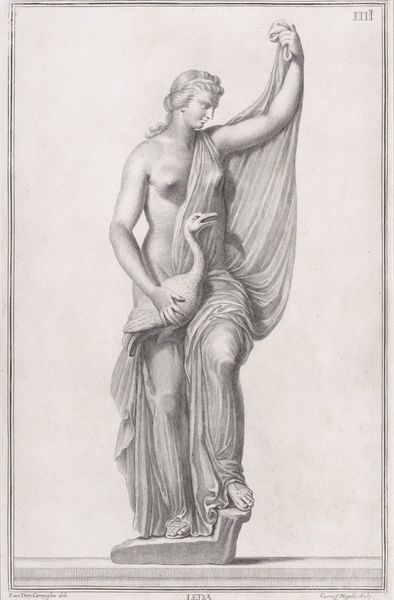
Sculptuur van Mercurius ontfermt zich over de jonge Bacchus 1823 - 1880
0:00
0:00
print, sculpture, engraving
#
neoclacissism
#
allegory
# print
#
old engraving style
#
figuration
#
pencil drawing
#
sculpture
#
engraving
Dimensions: height 555 mm, width 420 mm
Copyright: Rijks Museum: Open Domain
Editor: This is "Sculptuur van Mercurius ontfermt zich over de jonge Bacchus", or "Sculpture of Mercury taking care of the young Bacchus", an engraving from sometime between 1823 and 1880 by Pieter Gerardus Bernhard. I’m struck by the starkness of the figures against the faded background; it really highlights their classical forms. What do you see in this print? Curator: Well, beyond its clear Neoclassical style, I see a fascinating piece of cultural appropriation. Neoclassicism, especially in the 19th century, was often used by the elite to legitimize their power by referencing the perceived grandeur of the Roman Empire. But, it’s not a straightforward adoption. Notice how the original Greek myths are softened, sanitized for public consumption? It becomes about an ideal, less about the chaotic stories themselves. Editor: So, you're saying that the image isn’t really about Mercury or Bacchus? It’s more about what they represented to 19th-century viewers? Curator: Exactly! The "allegory" becomes a symbol. A symbol *used* to communicate certain values. Think about who was commissioning and consuming this kind of art. What did images of order and virtue mean to them, politically and socially? How did they control distribution to enhance impact? Editor: It’s interesting to think of the print not just as a piece of art, but as a carefully constructed message aimed at a specific audience. Curator: Precisely. The engraver acted as a translator of values. How are those values relevant today when this artwork is displayed in a museum setting? What do people make of this piece nowadays? What *should* they make of it? Editor: This makes me realize how crucial it is to look at art in relation to its cultural environment rather than in isolation. Thank you, it's been enlightening! Curator: My pleasure! Considering the socio-political backdrop is what really breathes life into historical art.
Comments
No comments
Be the first to comment and join the conversation on the ultimate creative platform.
